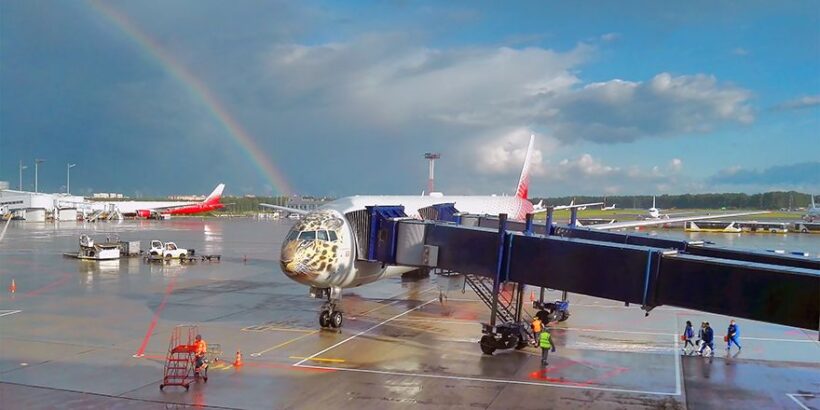In 2024, the Central Research Institute of Automation and Hydraulics (TsNIIAG), in partnership with Project-Technika JSC, completed the development of Russia’s first domestically manufactured passenger boarding bridge (PBB). The project achieved full production localization: all components are sourced from Russian manufacturers, minimizing reliance on foreign suppliers and reducing risks associated with import restrictions.
According to Rostec, a prototype PBB has already been produced and is undergoing comprehensive testing. Entry into service is scheduled for the coming months. The system utilizes electrohydraulic and electromechanical drives to adjust the height, length, and configuration of the bridge, enabling compatibility with various aircraft types. An automated control system ensures precise positioning, reducing the risk of damage to aircraft and ground equipment.
The design meets operational requirements for harsh climates, including low temperatures. This is particularly relevant for airports in Siberia and the Russian Far East, where temperature fluctuations and icing can impact ground support equipment. In addition to its primary function—providing safe and comfortable passenger boarding—the project includes provisions for maintenance and retrofit of existing foreign-made boarding bridges. This approach is expected to lower operating costs and enhance the technical independence of Russian airports.
Until recently, Russia was entirely dependent on imported airport equipment, including passenger boarding bridges. During the Soviet era and after the dissolution of the USSR, such equipment was supplied from abroad, primarily by the Dutch company Aviabridge.
The first boarding bridges were installed at Sheremetyevo Airport in 1972. However, due to incompatibility with local climate conditions, they frequently failed during winter. Their operation at Sheremetyevo was deemed impractical, leading to their removal and transfer to Tashkent, where the milder winter climate met the technical requirements of the Dutch bridges. By the early 1990s, the boarding bridges in Tashkent had become unserviceable and were dismantled.
In recent years, contracts for supplying boarding bridges to Russian airports have been awarded to foreign manufacturers, including Chinese companies. The absence of domestic alternatives has hindered infrastructure development and increased construction and maintenance costs.
The introduction of a Russian-made passenger boarding bridge opens new opportunities for airport infrastructure modernization. Localized production of components and control systems supports the growth of related industries and the development of domestic expertise. In the long term, this will enable expansion of the airport equipment portfolio and reduce operating expenses. Experts estimate that the deployment of domestic boarding bridges will enhance technological self-sufficiency and facilitate broader adoption of PBBs at regional airports.


